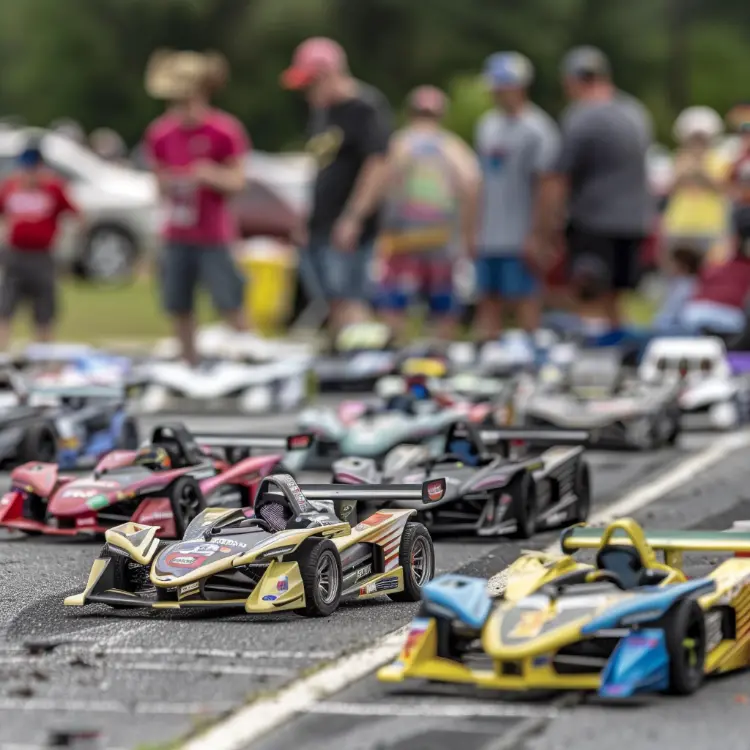Radio control cars, often referred to as RC cars, are a fascinating hobby that combines engineering, mechanics, and fun. This guide delves into the essential aspects of RC cars, focusing on batteries, voltage, and capacity to ensure optimal performance. Whether you're a novice or a seasoned enthusiast, understanding these components is crucial for maximizing your RC car's potential.

Radio control cars, or RC cars, are a thrilling hobby that blends engineering and fun. This guide explores the critical aspects of RC cars, focusing on batteries, voltage, and capacity to ensure peak performance. Whether you're a beginner or an experienced hobbyist, understanding these components is essential for getting the most out of your RC car.
The performance of your RC car heavily depends on the type of battery you use. The most common types are:
Each type has its own set of characteristics, advantages, and disadvantages.
Battery capacity, measured in milliampere-hours (mAh), indicates how much current a battery can store. For instance, a 2500mAh battery can theoretically provide 2500 milliamps for one hour. The capacity is crucial for determining how long your RC car can run before needing a recharge.
| Battery Type | Voltage per Cell | Typical Capacity (mAh) |
|---|---|---|
| NiMH | 1.2V | 1500-5000 |
| NiCd | 1.2V | 600-1500 |
| LiPo | 3.7V | 1000-8000 |
| LiIo | 3.7V | 1500-3000 |
The discharge rate, often denoted as C-rating, indicates how quickly a battery can be discharged. A 1C rating means the battery can be discharged in one hour. A 2C rating means it can be discharged in half an hour, and so on. For example, a 2500mAh battery with a 2C rating can deliver 5000mA (2 x 2500mA) of current.
Voltage is another critical factor that affects the performance of your RC car. Different types of batteries have different nominal voltages:
Batteries can be configured in series or parallel to achieve the desired voltage and capacity:
| Configuration | Voltage (V) | Capacity (mAh) |
|---|---|---|
| 2S | 7.4V | 2500 |
| 3S | 11.1V | 2500 |
| 2P | 3.7V | 5000 |
| 3P | 3.7V | 7500 |
Selecting the right battery involves balancing voltage, capacity, and discharge rate. Higher voltage increases speed, while higher capacity extends runtime. Always consult your RC car's manufacturer guidelines for recommended specifications.
Proper maintenance is crucial for battery longevity and safety. Always store batteries in a cool, dry place and avoid overcharging or deep discharging. Use a quality charger designed for your specific battery type.
Understanding the intricacies of batteries, voltage, and capacity is essential for maximizing the performance of your RC car. By choosing the right components and maintaining them properly, you can enjoy longer runtimes and better performance. Whether you're racing competitively or just having fun, these insights will help you get the most out of your RC car.
For more detailed information on RC car batteries, you can visit Battery University and RC Driver.

Perfect Wedding Dresses for Your Special Day
A stunning yet elegantly simple wedding gown is a must-have for nearly every bride-to-be. This article delves into the timeless allure of wedding dresses, inspired by iconic styles and modern trends, and offers practical advice for finding the perfect gown.
The Developmental Advantages of Stuffed Animal Toys for Children
Stuffed animal toys are more than just cuddly companions for children; they are tools that foster development and learning. These plush pals can be instrumental in teaching kids about the world around them, providing comfort, and enhancing imaginative play. While children often form deep attachments to their stuffed animals, viewing them as friends and confidants, the benefits of these toys extend far beyond their role in playtime.
Key Considerations Before Buying RC Cars for Your Loved Ones
Remote-controlled (RC) cars offer endless fun for all ages. These powerful, accessory-laden vehicles are not only visually appealing but also pack a punch in performance.